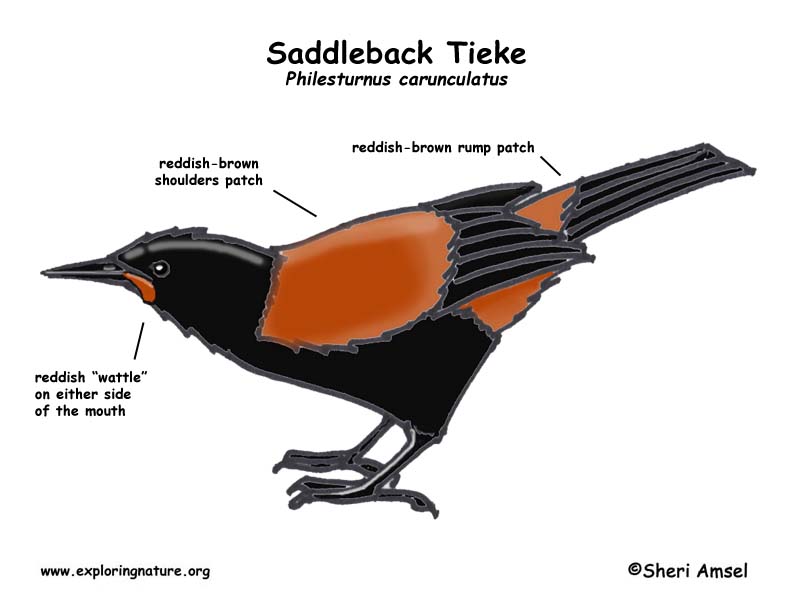

They are found on the offshore islands of New Zealand.
They live in the forest.
They are medium-sized birds at 9 – 10 inches long. Both males and females look alike. They are black with reddish-brown shoulders and rump. They have reddish little pieces of skin called a “wattles” on either side of their mouths (it is bigger in the males).
They have many sweet-sounding songs and sing to attract a mate and show their territory. They are very endangered. Young saddlebacks are called "jack-birds." Because their predators are all introduced animals, saddlebacks have been become endangered. They have not had time to evolve and adapt to the new predators. Young leave the nest before they can fly so are killed by cats and weasels (stoats). They nest in hollow trees where new predators can kill them easily.
They eat flower nectar, fruit, insects, grubs and seeds.
Females warm (incubate) eggs for 3 weeks.
Kingdom: Animalia
Phylum: Chordata
Subphylum: Vertebrata
Class: Aves
Order: Passeriformes
Family: Callaeidae
Genus: Philesturnus
Species: P. carunculatus
When you research information you must cite the reference. Citing for websites is different from citing from books, magazines and periodicals. The style of citing shown here is from the MLA Style Citations (Modern Language Association).
When citing a WEBSITE the general format is as follows.
Author Last Name, First Name(s). "Title: Subtitle of Part of Web Page, if appropriate." Title: Subtitle: Section of Page if appropriate. Sponsoring/Publishing Agency, If Given. Additional significant descriptive information. Date of Electronic Publication or other Date, such as Last Updated. Day Month Year of access < URL >.
Amsel, Sheri. "Tieke (Saddleback)" Exploring Nature Educational Resource ©2005-2024. December 13, 2024
< http://exploringnature.org/db/view/Tieke-Saddleback >

